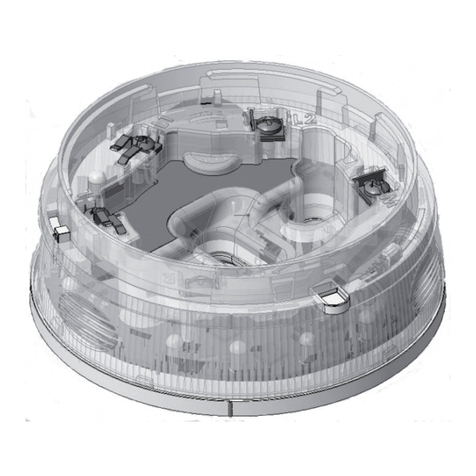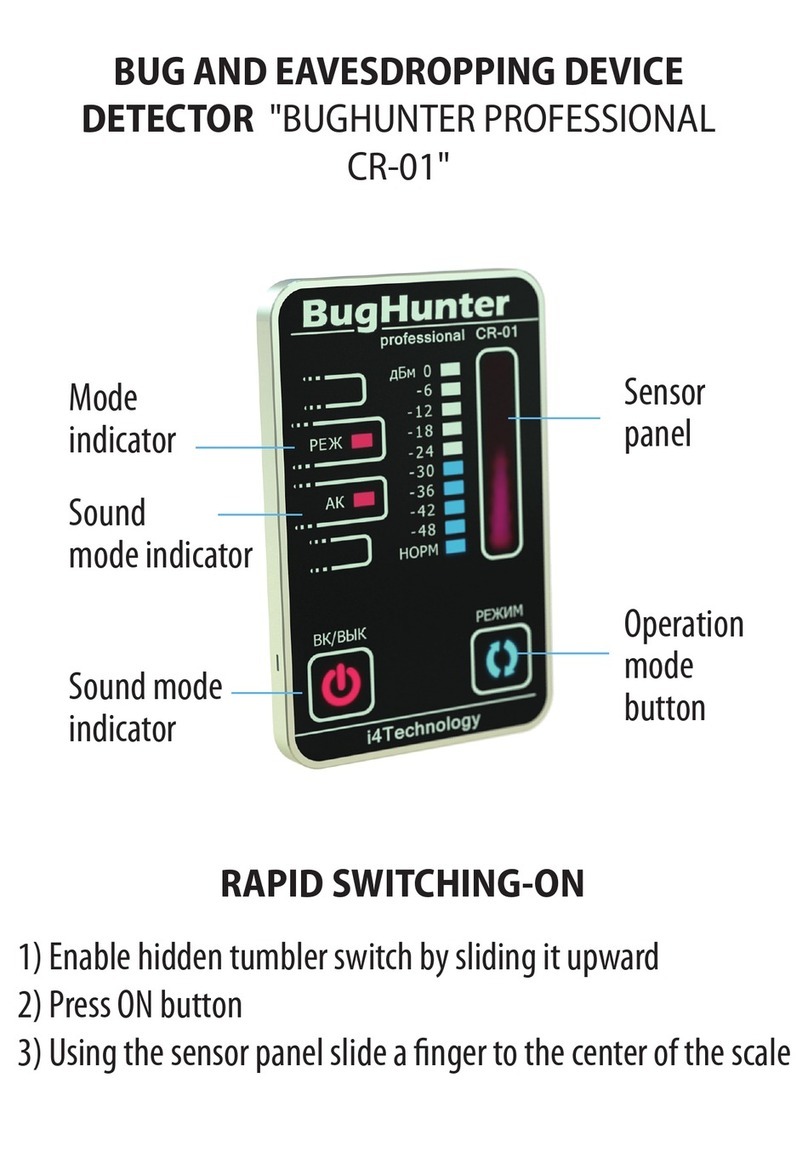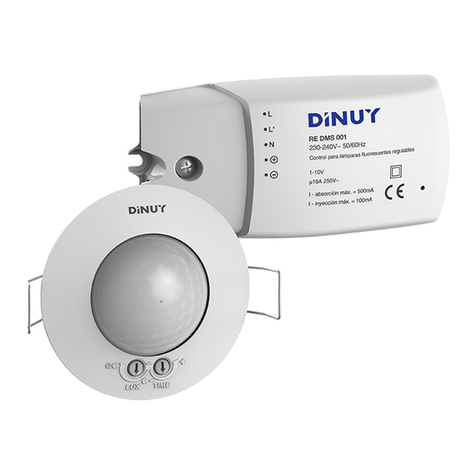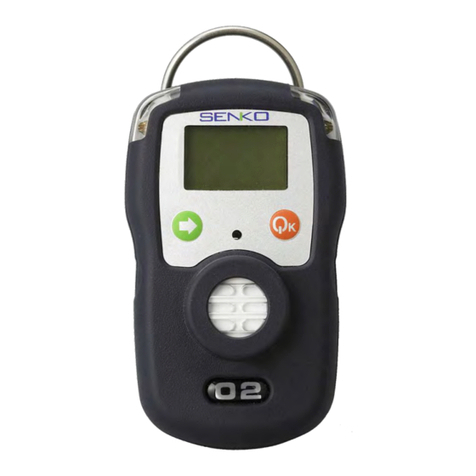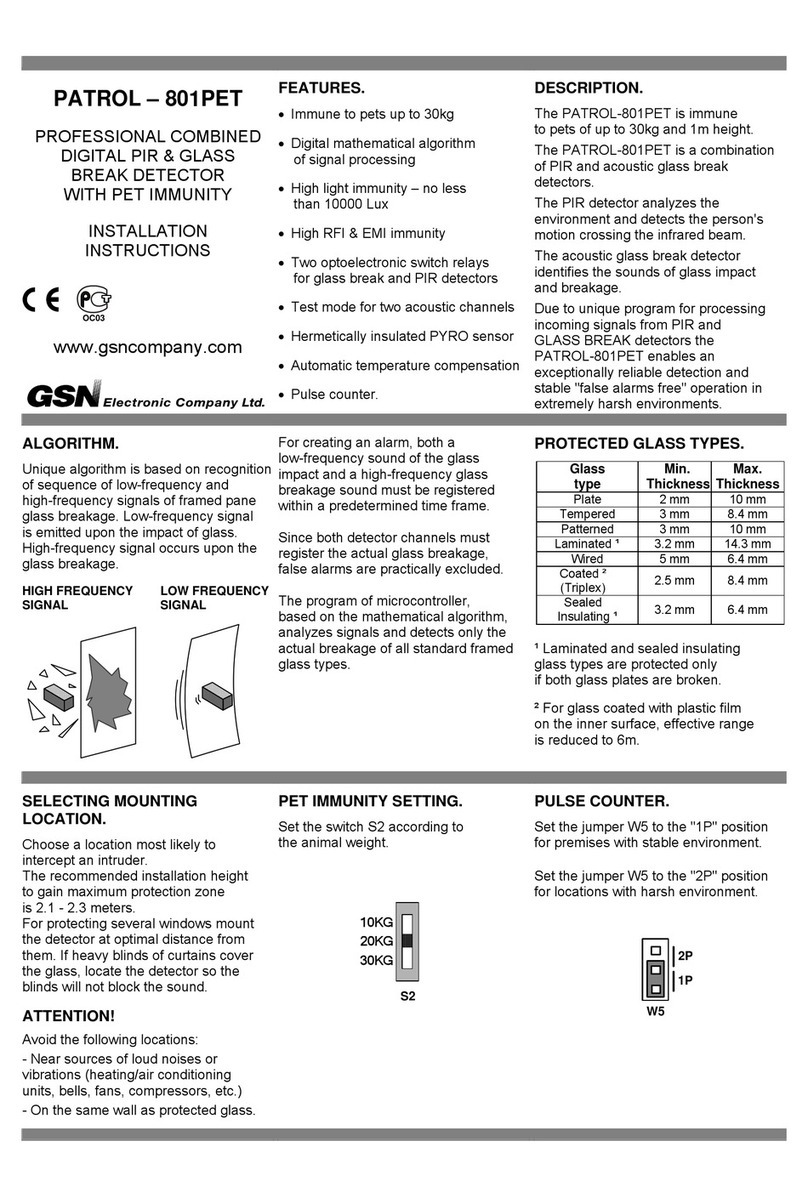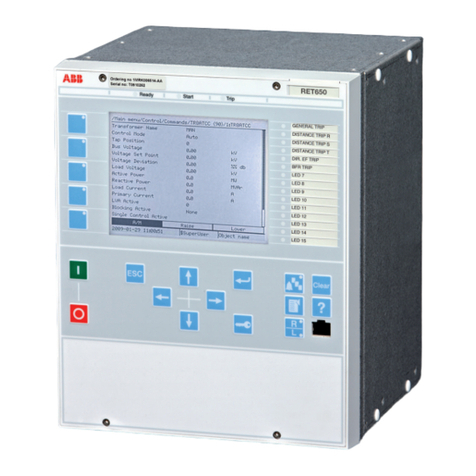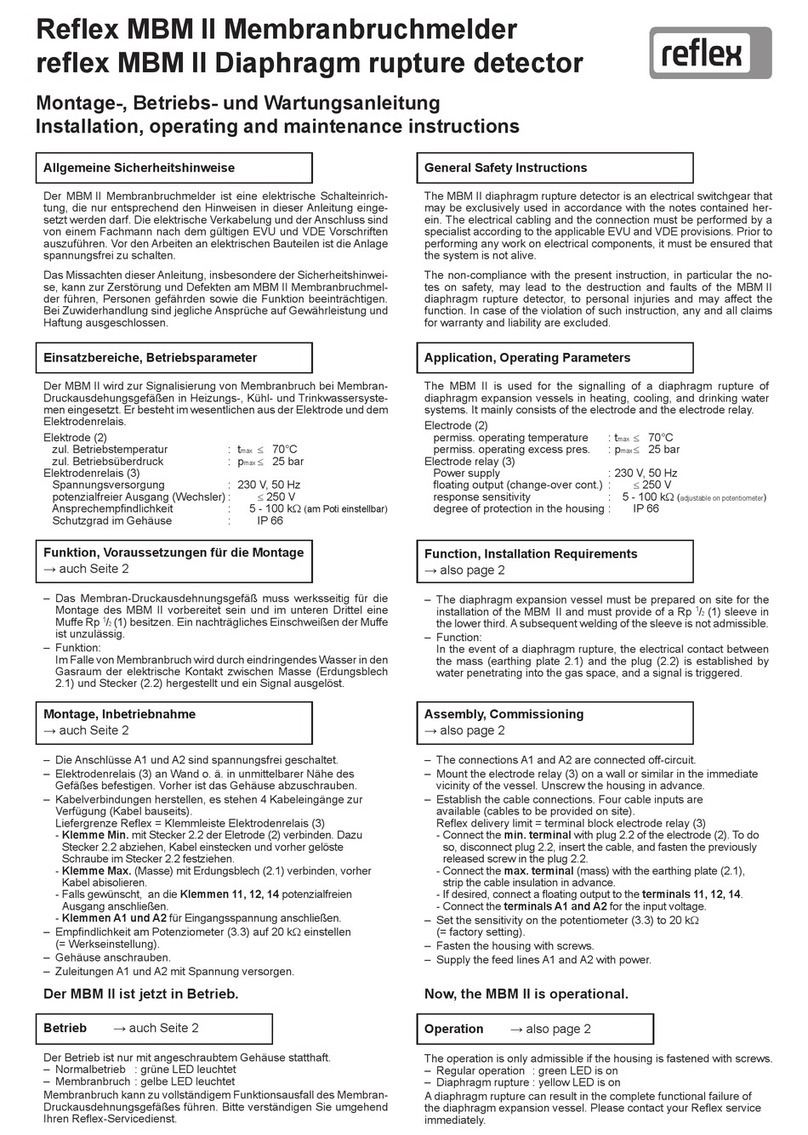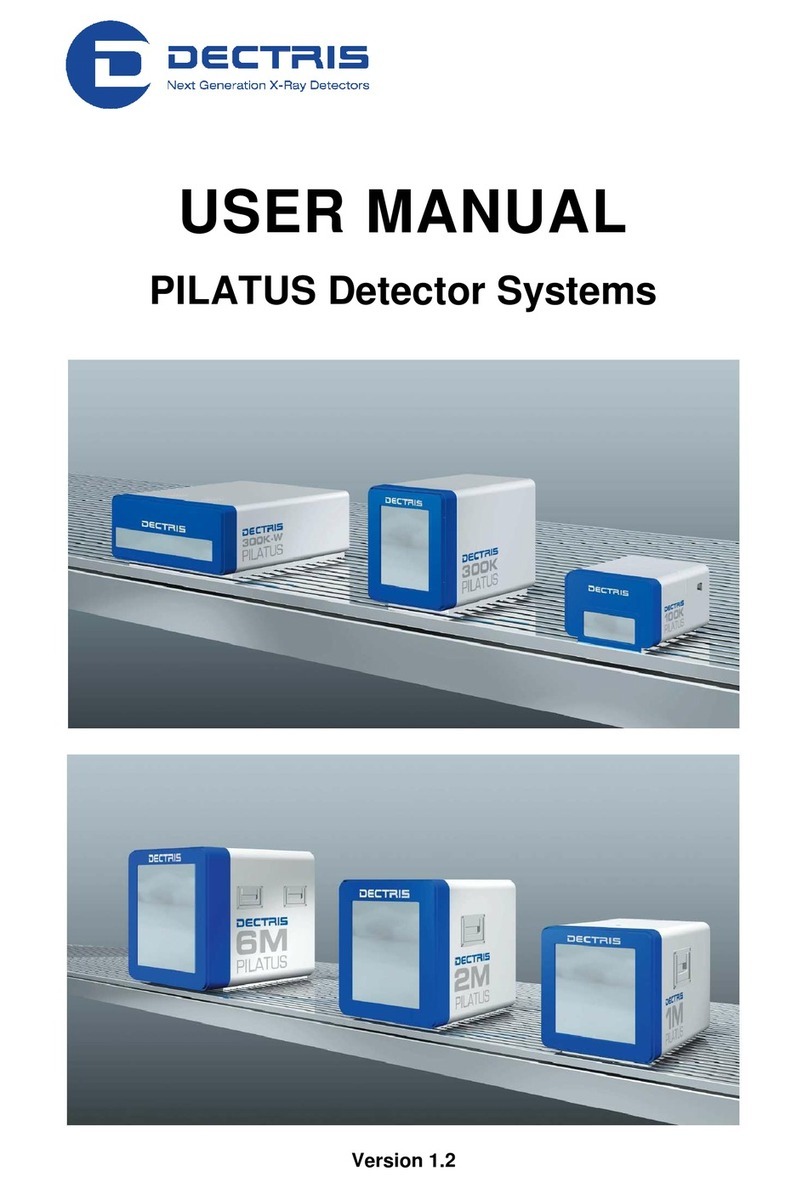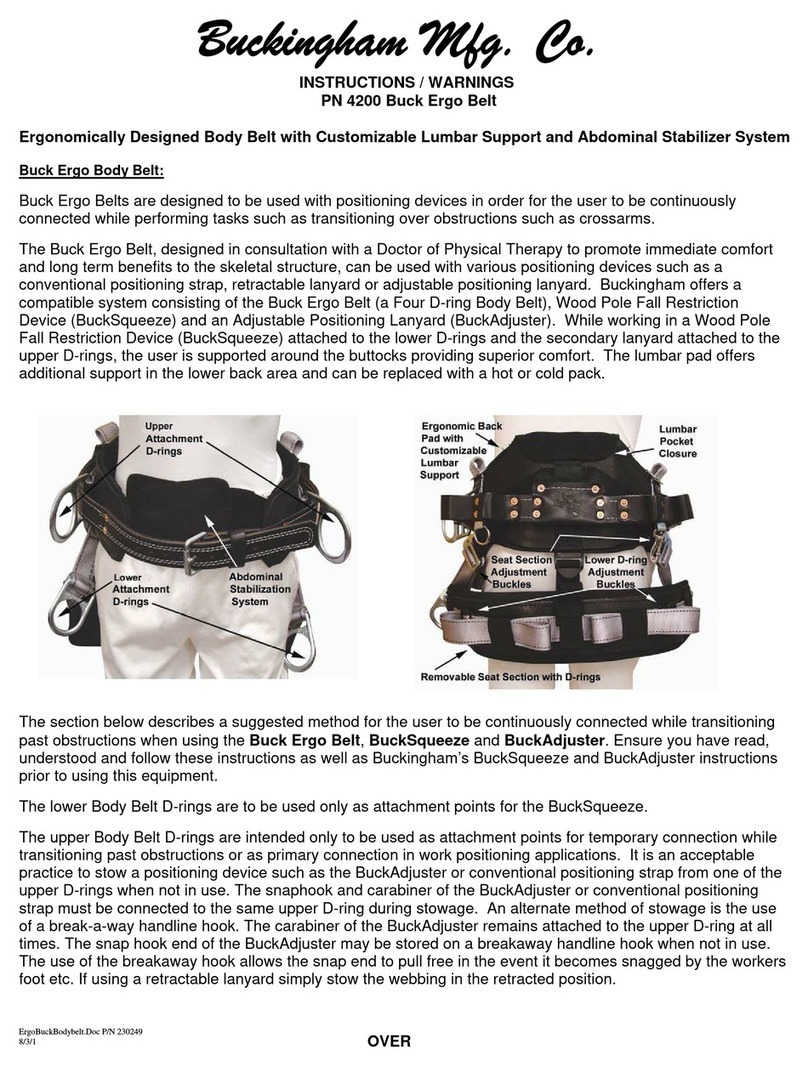Bierer VD1000 User manual

1
Digital Voltage Detector 0-999kV
Operating Instructions
VD1000TM

2
CONTENTS
Limitation of Warranty and Liability 3
Product Safety Information 4
Design and Function –Battery Replacement 5
Voltage Detection in the “URD” Position 6
Voltage Detection in the “OH” Position 7
Voltage Detection in the “OHT” Position 8
Testing Meter On Known Voltage 9
Notes 10
Part and Accessories 11

3
Limitation of Warranty and Liability
Bierer & Associates Inc. warrants this product to be free from defects in
workmanship and material, under normal use and service conditions for a
period of one year from date of shipment.
Due to continuous product improvement and development, Bierer & Associates
Inc. reserves the right to modify product designs and specifications without
notice.
It is impossible to eliminate all risks associated with the use of high voltage
electrical devices including this device. Risks of serious injury or death are
inherent in working around energized electrical systems. Such risks include but
are not limited to variations of electrical systems and equipment, manner of use
or applications, weather and environmental conditions, operator mentality, and
other unknown factors that are beyond the control of Bierer & Associates Inc.
Bierer & Associates Inc. do not express or imply to be an insurer of these risks,
and by purchasing or using this product you AGREE TO ACCEPT THESE RISKS. IN
NO EVENT SHALL Bierer & Associates Inc. BE LIABLE FOR ANY INCIDENTAL,
CONSEQUENTIAL OR SPECIAL DAMAGES RESULTING FROM THE USE OR
HANDLING OF THIS PRODUCT.
SAFETY MESSAGE DEFINITIONS per ANSI Z535
These instructions contain important safety messages to alert the user to
potentially hazardous situations, how to avoid the hazard, and the
consequences of failure to follow the instruction.
The safety alert symbol identifies a safety message. The signal word
following the symbol indicates:
DANGER A hazardous situation which, if not avoided, will result in
death or serious injury and equipment damage.
WARNING A hazardous situation which, if not avoided, could
result in death or serious injury and equipment damage.
CAUTION A hazardous situation which, if not avoided, could
result in minor or moderate injury and equipment damage.
NOTICE Important safety message relating to equipment damage
only.

4
PRODUCT SAFETY INFORMATION
WARNING
1. Meter assembly, interconnect cable assembly, and live line tool
adapters shall be considered non-insulating. Do not let live line tool
fittings come in contact with energized or grounded conductors. The
live line tool adapters, fittings, and handles supplied with meters
shall not be used on any other devices.
2. Use appropriate length live line tools for voltage being worked and
maintain minimum approach distances as outlined in OSHA
1910.269, Table R-6.
3. All Phasing Meters and Voltage Detectors manufactured during and
after 2007 will have a limit mark engraved on the high voltage
probe(s) 2.5 inches from the tip to indicate to the user the physical
limit that should not be exceeded when approaching and contacting
an electrical conductor or other electrical test points. Zero Ohm
insulated adapters (81280IE) should be used if limit mark will be
exceeded.
4. This equipment should be used only by qualified employees, trained
in and familiar with the safety-related work practices, safety rules
and other safety requirements associated with the use of this type
of equipment.
5. These instructions are not intended as a substitute for adequate
training, nor do they cover all details or situations which could be
encountered when operating this type of equipment.
6. Before operating this equipment, read, understand and follow all
instructions contained in this manual. Keep instructions with
equipment.
INSPECTION & MAINTENANCE BEFORE USE
WARNING
1. Prior to using any high voltage test equipment a careful inspection
should be made to ensure the unit is free from any contaminants
such as dirt, grease, etc. and that there are no apparent physical
damages.
2. High voltage probe assemblies shall be wiped clean prior to each use
with a silicone impregnated cloth and kept clean and free of
contaminants. This will prevent tracking on the outside of the probe
and meter error.
3. Always confirm internal battery voltage before and after each use.
4. Unit shall be tested before and after each use on a known voltage
source. Failure to do so could result in false negative indications

5
DESIGN and FUNCTION
WARNING
Limit Mark -see “Product Safety Information”, item 3, page 4.
The VD1000 is a direct contact, capacitive type voltage detector for use
on voltages from 0 to 99.9kV on distributions circuits and 999kV on
Transmission conductors. The 0V is for identifying de-energized lines. For
voltage readings, meter works at or above 1kV.
NOTE: Meter indicates Line-to-Ground values. Not calibrated to read
Phase-to-Phase.
Each unit has a five position switch for the following functions:
OFF Use this position for Storage and Transit
URD Direct Contact, Underground Primary (01.0 - 99.9)
OH Direct Contact, Overhead Lines (01.0 –99.9)
OHTDirect Contact, Substation & Transmission Lines (001 –999)
TEST Displays battery voltage, i.e. 9.0 = 9vdc battery voltage
NOTICE This unit incorporates a battery test when turned to the test
position displaying the battery voltage. A reading less than 07.0 indicates
low battery. Replaceable 9V battery is located behind the live line tool
attachment threaded into the meter housing.
WARNING
As with all voltage detectors, readings can be affected by a variety of field
conditions. For example, if the live line tool attachment is close to another
phase, ground or voltage source, the readings may be high. If the live line tool
attachment is close to the same phase, readings may be low.
If there is any doubt about the meter reading under any circumstances, the line
or equipment shall be considered energized and appropriate safety precautions
taken, i.e., confirm visual open gaps, tag outs, hold orders and sources of
induced voltage.

6
Voltage Detection in the “URD” Position
WARNING
Unit shall be tested before and after each use on a known voltage
source. Failure to do so could result in false negative indications.
1. Test Voltage detector for proper operation by turning selector
switch to the “TEST” position. Meter should display 88.8 then the
current battery voltage and hold it as long as it is held in the test
position.
2. Thread appropriate adapter, bushing or elbow into meter probe.
3. Attach voltage detector to appropriate length live line tool for
voltage being tested.
4. Turn the selector switch to the “URD” position.
5. Make direct contact with URD equipment under test. If
equipment is energized, meter should read approximate Line-to-
Ground voltage (01.0kV –99.9kV).
6. If URD equipment is de-energized, meter should read zero volts.
7. Re-test voltage detector by turning the selector switch to “Off”
and back to “TEST”.
Readings should take into account proximity to other phases and
grounded surfaces and be consistent with previous experience on the
same voltage and circuit configuration with this voltage detector. If there
is any doubt about the meter reading in the “URD” position, the line or
equipment shall be considered energized and appropriate safety
precautions taken.

7
Voltage Detection in the “OH” Position
WARNING
Unit shall be tested before and after each use on a known voltage source.
Failure to do so could result in false negative indications.
1. Test Voltage detector for proper operation by turning selector
switch to the “TEST” position. Meter should display 88.8 then the
current battery voltage and hold it as long as it is held in the test
position.
2. Turn the selector switch to the “OH” position.
3. Attach voltage detector to appropriate length live line tool for
voltage being tested.
4. Make direct contact with line or equipment under test. If
equipment is energized, meter should read approximate Line-to-
Ground voltage (01.0kV –99.9kV).
5. If no voltage is present, meter should read zero volts. Readings
other than zero volts may indicate the presence of induced
voltage.
6. Re-test voltage detector by turning the selector switch to “Off”
and back to “TEST”.
WARNING
Unit shall be tested before and after each use on a known voltage source.
Failure to do so could result in false negative indications.
Readings should take into account proximity to other phases and
grounded surfaces and be consistent with previous experience on the
same voltage and circuit configuration with this voltage detector. If there
is any doubt about the meter reading in the “OH” position, the line or
equipment shall be considered energized and appropriate safety
precautions taken.

8
Voltage Detection in the “OHT” Position
WARNING
Unit shall be tested before and after each use on a known voltage
source. Failure to do so could result in false negative indications.
1. Test Voltage detector for proper operation by turning selector
switch to the “TEST” position. Meter should display 88.8 then the
current battery voltage and hold it as long as it is held in the test
position.
2. Turn the selector switch to the “OHT” position.
3. Attach voltage detector to appropriate length live line tool for
voltage being tested.
4. Make direct contact with line or equipment under test. If
equipment is energized, meter should read approximate Line-to-
Ground voltage (001kV –999kV)
5. If line or equipment is de-energized, meter should read zero volts.
Readings other than zero volts may indicate the presence of
induced voltage.
6. Re-test voltage detector by turning the selector switch to “Off”
and back to “TEST”.
Readings should take into account proximity to other phases and
grounded surfaces and be consistent with previous experience on the
same voltage and circuit configuration with this voltage detector. If there
is any doubt about the meter reading in the “OHT” position, the line or
equipment shall be considered energized and appropriate safety
precautions taken.

9
Testing Unit On Known Voltage
WARNING
Unit shall be tested before and after each use on a known voltage
source. Failure to do so could result in false negative indications.
1. Test Voltage detector for proper operation by turning selector
switch to the “TEST” position. Meter should display 88.8 then the
current battery voltage and hold it as long as it is held in the test
position.
2. Turn the selector switch to any position.
3. Attach voltage detector to appropriate length live line tool for
voltage being tested.
4. Make direct contact with the known voltage source.
5. The meter should display a voltage appropriate for the device
being used for the known voltage. See operating instructions for
the voltage source for normal voltage readings.
6. Re-test voltage detector by turning the selector switch to “Off”
and back to “Test”.

10
Notes
___________________________________________________________
___________________________________________________________
___________________________________________________________
___________________________________________________________
___________________________________________________________
___________________________________________________________
___________________________________________________________
___________________________________________________________
___________________________________________________________
___________________________________________________________
___________________________________________________________
___________________________________________________________
___________________________________________________________
___________________________________________________________
___________________________________________________________
___________________________________________________________
___________________________________________________________
___________________________________________________________
___________________________________________________________
___________________________________________________________
___________________________________________________________
___________________________________________________________
___________________________________________________________
___________________________________________________________
___________________________________________________________
___________________________________________________________
___________________________________________________________
___________________________________________________________
___________________________________________________________
___________________________________________________________
___________________________________________________________
___________________________________________________________
___________________________________________________________
___________________________________________________________
___________________________________________________________

11
PARTS & ACCESSORIES
PART NO.
DESCRIPTION
3402
Quick Change to Grip All
Adapter
3403
Quick Change to Universal
Adapter
8128EALB
15 –25kV Elbow Adapter
8128TBALB
15 - 25kV Bushing Adapter
81280LHM
Hook Adapter
81280LPM
Straight Probe Adapter
81280B1
6V Battery for Power Supply
PA25B
20” Storage Box with Foam
PA25T
3kV Power Supply
PAH6TB
26" Storage Box for Handles
PD50B
26" Storage Box with Foam
Technical & Service
Bierer & Associates Inc.
Manufacturing & Repair
10730 Farrow Rd.
Blythewood SC 29016
Tel: (803) 786-4839
Fax: (803)786-5457
BiererMeters.com

12
Other manuals for VD1000
1
Table of contents
Popular Security Sensor manuals by other brands
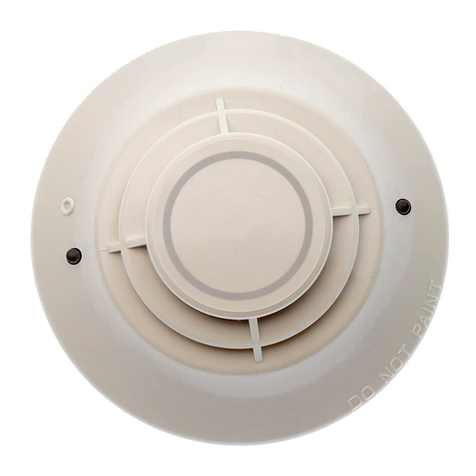
Honeywell
Honeywell Notifier FST-851 Series quick start guide

Marmitek
Marmitek smart me Sense SE instructions
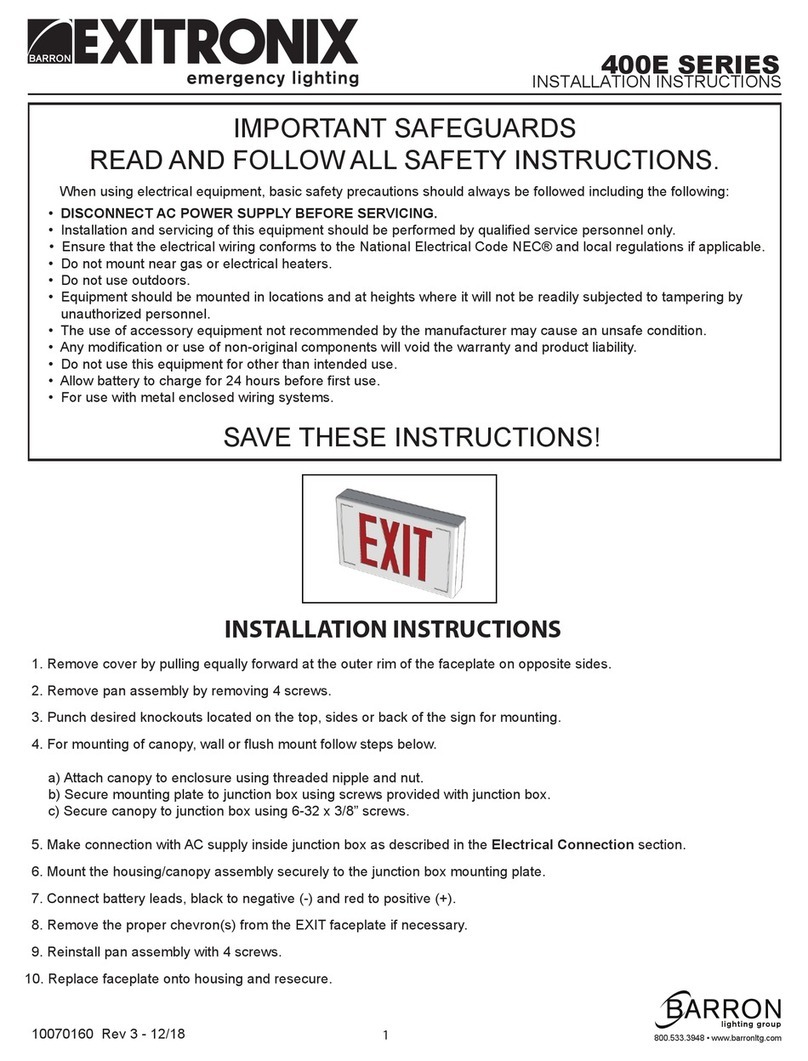
BARRON
BARRON EXITRONIX 400E Series installation instructions
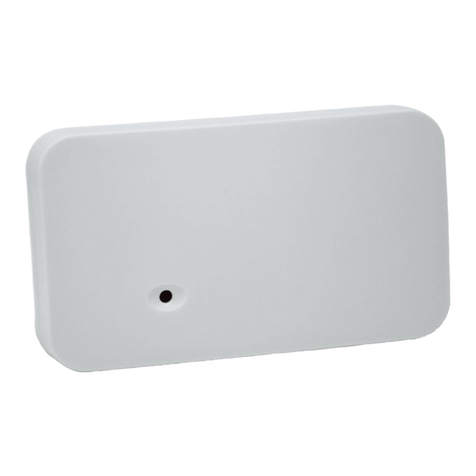
Alula
Alula RE629 Glassbreak Connect+ Encrypted quick start guide
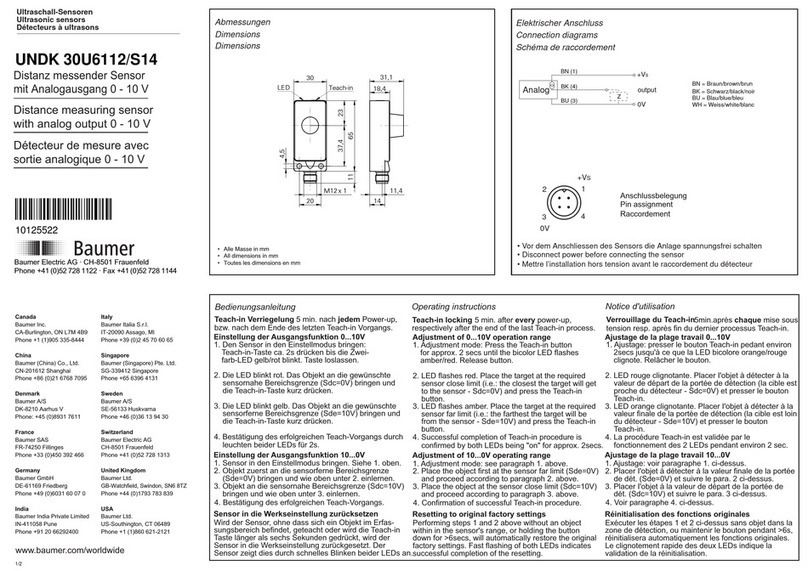
Baumer
Baumer UNDK 30U6112/S14 manual
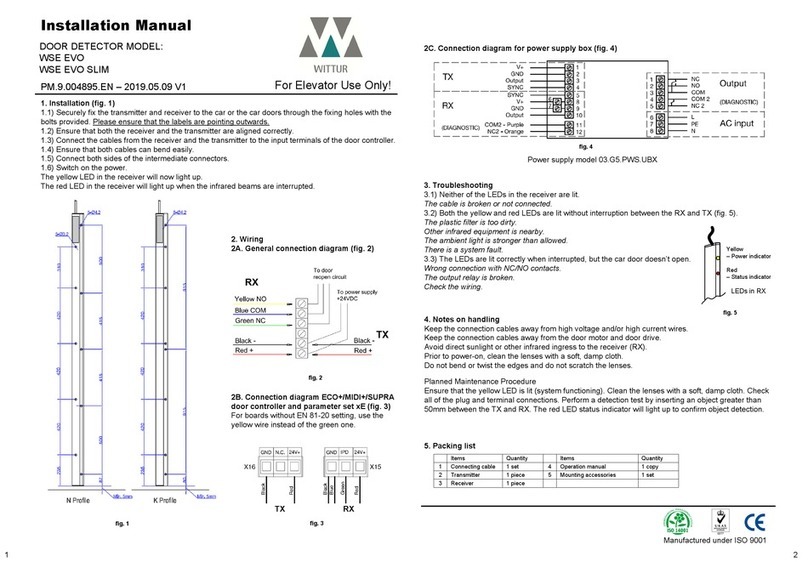
WITTUR
WITTUR WSE EVO installation manual
